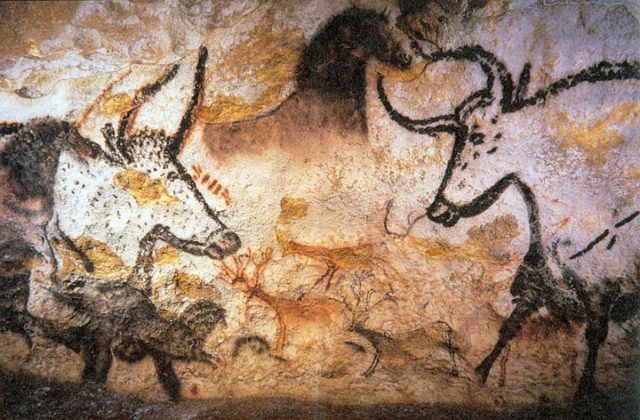For years archaeologists and historians have studied the ways ancient people used to live and the places where they traveled. Thankfully, these people have left many clues and sites for archaeologists to study today.
Just recently, archaeologists believed they had stumbled upon Britain’s oldest piece of artwork, which dates back to the Ice Age. The hunter-gatherer artifacts were found in Jersey and are believed to be around 14,000 years old. Along with the artifacts, there were fragments of stone with special lines carved into them.
Surprisingly, there have been three other slabs of stone found in Germany and southern France that all have the same engravings on them. However, this is the first time these have been found in Britain, making this an extraordinary find.
The markings on the stone are believed to pre-date the earliest hunter-gatherer artwork found in the United Kingdom. The first-ever artwork found dating back to the Ice Age was carved into the stone walls and bones at Creswell Crags in Derbyshire back in 2003.
The group of archaeologists working on the Ice Age Island Project have been working on the Les Varines site just southeast of Jersey for nearly five years now. The co-director of the project, Dr. Chantal Conneller, had said that the team was feeling confident after the three fragments were found on the site. They had noticed that the stones were different than others since they had special engraved lines on them. They believe that these types of artwork are considered to be examples of “non-representational Magdalenian art.”

Back in 2015, the fragments were found in a small corner in the excavation trenches. Along with the fragments, archaeologists found stone artifacts as well as a piece of concentrated burnt bone. What is most interesting about the bone is that archaeologists found that it had been sealed with what looks to be ancient land surface or material found in paving slabs.
Silvia Bello from the Natural History Museum is still studying the fragments found. She said that they are still quite early in their investigations, but they already know that the stones were not natural to the site. This was due to the fact they had those precise lines that were evidence of having been made with another stone tool. However, they are still not sure what purpose those fragments had to the ancient people. She added that it could just be that the designs on the flat rocks were part of the Magdalenian culture – simply artwork to be enjoyed by the people.
Conneller also said that these particular engraved stones are rather common in the Magdalenian camps. Similar stones were found in other countries and had the same designs. However, in the other two countries, the archaeologists pinpointed that the rocks may have been used for some kind of magical or religious use.
Stones such as this are exceptionally rare, making this a rather significant find for the experts.
Conneller explained that even though she and her team are not sure just how old the site is, it still gives them an idea about one of the first hunter-gatherer communities to recolonize northern Europe after the coldest period of the last Ice Age. The Magdalenian culture had been one of the first to eventually recolonize Europe as the ice began melting away almost 16,000 to 13,000 years ago.
As stated above, the stones with the lines through them are a rather popular find in France and Germany, especially in these Magdalenian sites. Conneller said she is looking forward to keep digging at this site, hoping to find more stone fragments. At the German sites, archaeologists found hundreds of pieces. She added that what they have found is, at the moment, just a small fragment of something that came off a larger piece.

Other Magdalenian sites had been hiding engraved stones that depicted horses or other figures. According to archaeologists, the stones appeared to have been reused several times to make new images. The team working on the dig could see that there were imprints of other stone tools in the fragments. This shows the experts that the people had most likely led a more complex life than thought. The stones, in particular, had been re-engraved over time.
With further analysis, the team hopes that they can get a precise date for the bone that was found. However, in the meantime, they will look at the cultural similarities between their camp and the ones that had been discovered in Europe.
Conneller said that she believes she is quite confident that the bone dates back to 15,000 to 14,500 years ago. She added that her estimate is based on the other sites found, especially in France. The Madalenian culture had disappeared around 10,000 BC when herded animals became scarce.
Ed Blinkhorn from the UCL Institute of Archaeology said that these small discoveries come after digging at the site for five years. He added that he and his team had to have been quite patient to have to finally discover something significant. They knew that there had been a hunter-gatherer campsite somewhere in the field that they were working; they would find it eventually.
Conneller said that the most exciting thing about this site is that a majority of it seems to be intact. They are beginning to uncover hearths, bones, and other engraved stones.
